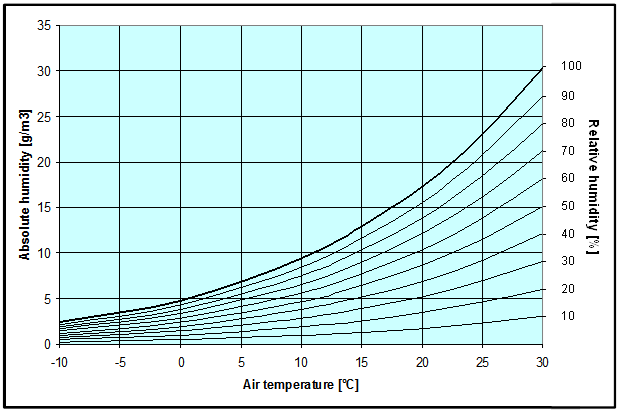For the assessment of the proper state of "container-fitness" of the cargo to be packed and for the understanding of typical processes of condensation damage the most relevant technical terms and definitions are given below:
Absolute humidity of air | Actual amount of water vapour in the air, measured in g/m3 or g/kg. |
Condensation | Conversion of water vapour into a liquid state. Condensation usually starts when air is cooled down to its dew point in contact with cold surfaces. |
Corrosion threshold | A relative humidity of 40% or more will lead to an increasing risk of corrosion of ferrous metals. |
Crypto climate in the container | State of relative humidity of the air in a closed container, which depends on the water content of the cargo or materials in the container and on the ambient temperature. |
Daily temperature variation in the container | Rise and fall of temperature in accordance with the times of day and often exaggerated by radiation or other weather influences. |
Dew point of air: | Temperature below the actual temperature at which a given relative humidity would reach 100%. Example: The dew point of air at a temperature of 30°C and 57% relative humidity (= 17.3 g/m3 absolute humidity) would be 20°C, because at this temperature the 17.3 g/m3 represent the saturation humidity or 100% relative humidity. |
Hygroscopicity of cargo | Property of certain cargoes or materials to absorb water vapour (adsorption) or emit water vapour (desorption) depending on the relative humidity of the ambient air. |
Mould growth threshold | A relative humidity of 75% or more will lead to an increasing risk of mould growth on substances of organic origin like foodstuff, textiles, leather, wood, ore substances of non-organic origin such as pottery. |
Relative humidity of air | Actual absolute humidity expressed as percentage of the saturation humidity at a given temperature. Example: An absolute humidity of 17.3 g/m3 in an air of 30°C represents a relative humidity of 100 · 17.3 / 30.3 = 57%. |
Saturation humidity of air | Maximum possible humidity content in the air depending on the air temperature (2.4 g/m3 at -10°C; 4.8 g/m3 at 0°C; 9.4 g/m3 at 10°C; 17.3 g/m3 at 20°C; 30.3 g/m3 at 30°C; see figure 3.1 below). |
Sorption equilibrium | State of equilibrium of adsorption and desorption at a given relative humidity of the ambient air and the associated water content of the cargo or material. |
Sorption isotherm | An empirical graph showing the relation of water content of a cargo or material to the relative humidity of the ambient air. Usually the adsorption process is used to characterize the above relation. Sorption isotherms are specific for the various cargoes or materials (see figure 3.2 below). |
Water content of cargo | Latent water and water vapour in a hygroscopic cargo or associated material, usually stated as percentage of the wet mass of cargo (e.g. 20 t cocoa beans with 8% water content will contain 1.6 t water). |
Figure 3.1 Absolute and relative humidity
Figure 3.2 Sorption isotherms of Sitka spruce

